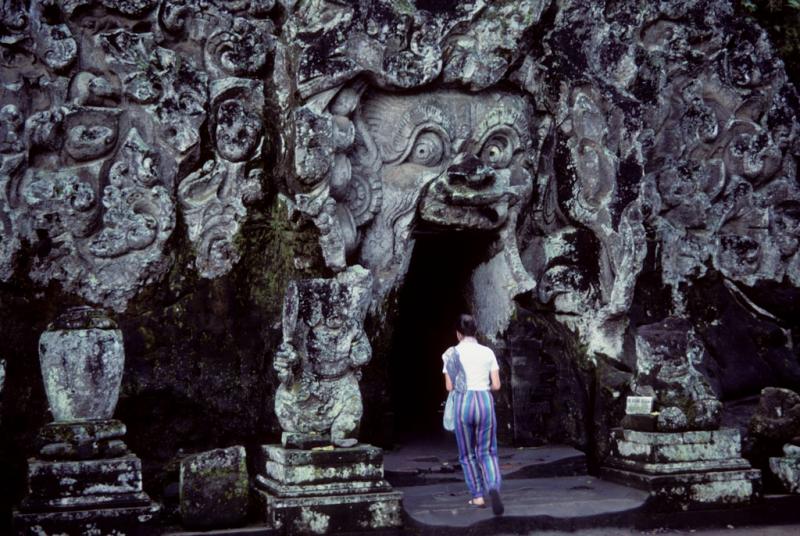Woman enters Goa Gajah or elephant cave in Bali
Woman enters Goa Gajah or elephant cave in Bali
A woman tourist wearing blue striped pants and a white T-shirt enters Goa Gajah or "elephant cave" in Bali. She walks between carved columns and beneath the mouth of a huge carved elephant face into the dark cave's entrance.The heavily carved cave is thought to date to the 11th century C.E. when it likely was used as a Hindu shrine and monastery. Dedicated to the worship of the Hindu god Siva and his elephant-headed son Ganesha, the cave also includes Buddhas and Hindu fertility statues inside. The mix of Hindu and Buddhist elements suggest both long periods of use and the close association of these sources of wisdom that are found together throughout Bali.Apparently abandoned by earlier worshippers, the cave was re-discovered by Europeans in the 1920s and then excavated over several decades. It is located in the town of Bedulu, near Ubud, in the Gianyar district of Bali.

Creative Commons BY-NC-SA
This item has a Creative Commons license for re-use. This Creative Commons BY-NC-SA license means that you may use, remix, tweak, and build upon the work for non-commerical purposes as long as you credit the original creator and as long as you license your new creation using the same license. For more information about Creative Commons licensing and a link to the license, see full details at https://creativecommons.org/licenses/by-nc-sa/4.0/.